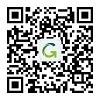On the Qinghai Tibet Plateau, Dr. Huang Danxi, who graduated from XUAT, was walking through salt lake factories to the target sampling point as usual.
It is located at the northwest edge of Qaidam Basin on the Qinghai Tibet Plateau and is subordinate to Lenghu, Mangnai City, Haixi Mongol and Tibetan Autonomous Prefecture of Qinghai Province, and was once a no man's land, cold and windy, dry and rainless. Wang Lei, a professor from Xi'an University of Architecture and Technology, has set up a technical experimental field here for the project of "lithium extraction from salt lakes"., and Huang Danxi is a member of Wang Lei's team.
Lithium is a widely used metal element, mostly taken from salt lakes rich in minerals. Although China has relatively rich natural resource conditions, due to the difficulty in breaking through the technology of extracting lithium, it has to rely on imports for a long time. "If we do not master the core technology from the source, it will be difficult to reverse the situation that we are" stuck "." Wang Lei's team aimed at the national demand and industrialized the core technology of independent innovation, which reduced the extraction cost of lithium from more than 30,000 yuan/ton to 15,000 yuan/ton, with higher purity and more environmental protection, greatly reducing China's dependence on imported lithium resources.
As early as in 2017, relying on the advantageous disciplines of Xi'an University of Architecture and Technology, Wang Lei established the Shaanxi Membrane Separation Technology Research Institute, which conducts basic research and technology development around membrane separation science and technology, provides a common technology platform for industrialization, and gradually develops a new model of whole industry chain transformation of "basic research - application and development - achievement transformation - enterprise incubation - capital operation".
In the same year, Wang Lei brought his self-developed core technology to the Qinghai Tibet Plateau and conducted a successful experiment on the "Salt Lake Lithium Extraction" technology in Lenghu. Recalling the situation when he first arrived, Huang Danxi said that due to the cold winter climate there, the water pipes often froze and cracked, making it impossible to ensure even domestic water supply.
They need to face not only the hardships of living conditions there, but also the challenges of low lithium ion content, poor quality, and difficult extraction in the lake water. In response, Wang Lei said, "The reason why we choose to crack the hardest nut and root in the place with the lowest lithium content is to verify the progressiveness of the self-developed technology."
With the help of self-developed solid-phase ion binding materials with membrane separation technology as the core, and adhering to the concept of "One Lake, One Material, One Lake, One Process", the team has developed an "efficient adsorption + desorption + lithium precipitation" distributed green brine lithium extraction process, and thus obtained related products. Their production bases have also expanded to places such as Qaidam and Golmud.
"Walking out of the laboratory and to the factory, we have grown from technical and R&D personnel to industrial and management 'Generalists'," said Cui Zheng, a member of Wang Lei's team, a master's degree graduate of XUAT, and the ma in charge of projects in Qaidam.
The Salt Lake serves as a classroom, and the base as a stage, Wang Lei's team is walking step by step towards the depths of "lithium extraction from the Salt Lake".

 Chinese
Chinese English
English





